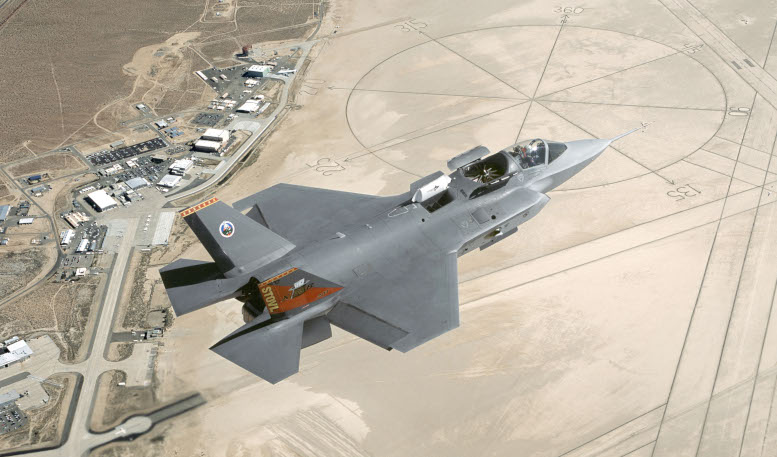Since Russia’s invasion of Ukraine, arms spending around the world has soared. Germany and Japan have announced a doubling of spending on weapons of death. At the same time governments say there is not enough money to increase wages in line with inflation or to invest in the public health systems at risk of collapse.
The Edwin Starr song of 1970 goes: “War, what is it good for? Absolutely nothing!” We can testify to the truth of that as most of the world has watched with horror, the horrendous situation in Ukraine. The human cost on both sides is the most palpable (Ukrainian military and civilian deaths estimated at 140,000; Russian military deaths estimated at 29,500 — both are probably underestimates). Millions of people are refugees. The economic cost (recovery and reconstruction needs across Ukraine total at least $349 billion, more than 1.5 times the size of Ukraine’s pre-war economy in 2021) is also staggering. Less visible is the environmental impact — some 30 percent of Ukraine’s protected areas, covering 3 million acres, have been bombed, polluted, burned, or hit by military maneuvers.
If war is good for nothing, it follows that the weapons of war, euphemistically called “defence” weapons, are equally useless. In January, the Trudeau government announced its intentions to “enhance” Canada’s defence capabilities with the purchase of F-35 Fighter Jets. They come at a price — $85 million each or $19 billion for the full set of 88. That’s what the Canadian government is going to pay Lockheed Martin, the manufacturer, for the jets. On top of that, the operational cost to send one of these babies up to the skies comes in at $56,403 an hour. Government officials confirmed that the full life cycle cost for the F-35 project, including infrastructure costs, repairs and purchasing spare parts, will come to $70 billion.
When in opposition, Trudeau criticized Harper saying that “Canadians know full well that for 10 years the Conservatives completely missed the boat when it came to delivering to Canadians and their armed forces the equipment they needed. They clung to an aircraft (the F-35s) that does not work and is far from working.” The Liberal government had stated more recently that Canada did not need the F-35s “stealth first-strike capability” for its defence.
And why does Canada need all this?
According to Canadian Defence Minister, Anita Anand, “Canada requires a fighter fleet to protect the sovereignty of one of the largest expanses of airspace in the world — the country’s vast Arctic frontier.” This is funny considering that when a “high-altitude airborne object,” aka a balloon that cost less than $20, was seen flying over the Yukon recently, it was an American fighter jet — an F-22 — that shot it down. Where has Canadian pride gone when the government allows the Americans to do the dirty work of balloon downing? Even more humiliating for Canada, the US authorities declared the balloons to be for “research” purposes and didn’t belong to foreign government entities. As for Minister Anand’s claim about protecting the sovereignty of the Arctic, it’s interesting that a Google search using the question “what is the greatest threat to the Arctic region of Canada?” comes up with the brief answer “climate change.” A supplementary comment is: “Offshore operations pose the greatest risk, since routine emissions, spills or leaks will be discharged directly into the sea or on the sea ice.”
The F-35s are supposed to be critical for the operations of NORAD (North American Aerospace Defence Command). This joint US and Canada organization was set up during the cold war as a defensive air shield to protect North America from a possible attack by long-range, staffed Soviet bombers. Yet the Canadian fighter jets were never called into action to deal with a Soviet threat. In the aftermath of the 9/11 attacks, NORAD began the fancifully named Operation Noble Eagle. The purpose of this still-ongoing air patrol mission is to defend the United States and Canada against terrorist aggression originating from either within or outside the nations’ air borders. Again, Canadian jets have never been called into action to deal with a terrorism threat. It is not clear how jets could be used to deal with a terrorist threat. On the other hand, NORAD forces have played a role in air defense support for events such as protection for the NASA shuttle launches, G8 summit meetings, and even Superbowl football events. So here it is — an $85 million jet with all the bells and whistles going airborne at $56,403 an hour to protect a football event. From what?
What do the makers of the F-35s say?
The maker of the F-35s is Lockheed Martin (LM), a leading corporate player in the US military-industrial complex. Its net earnings in 2022 were $5.7 billion. “LM is proud that the F-35 Lightning II offers the most technologically advanced capabilities at a decreasing cost for taxpayers, yielding tremendous economic benefits for Canada’s aerospace and defence industry. The F-35 strengthens Canada’s operational capability with our allies and is a cornerstone for interoperability with NORAD and NATO.” LM goes on to say, “With unparalleled stealth, advanced sensors, supersonic speed, weapons capacity and increased range, the F-35 is the most advanced, survivable and connected fighter jet ever built. Stealth is a critical capability to pilot survivability and the F-35’s unique mix of stealth and sensor technology can enable the Royal Canadian Air Force to patrol, monitor and conduct surveillance without being detected.” Stealth is obviously an important factor when dealing with the balloon threat and other “terrorist” encroachments in Canadian skies.
“Threats” to Canada
This poses the question of how, with or without fighter jets, with or without the brave men and women of the armed forces, does the RCAF protect Canadians at home and abroad? The external threats to Canadians from foreign armies, navies or air forces are non-existent. Listed first on the Government’s website: “Threats to Canada’s National Security” is the COVID 19 pandemic. Then comes Foreign Interference and Espionage followed by Election Security, Economic Security, Cyber Threats, the proliferation of chemical, biological and nuclear weapons, commonly referred to as weapons of mass destruction (WMD), and Politically and Religiously Motivated Violent Extremism. Very few F-35s, soldiers, sailors or aviators would be in a position to deal with these issues.
It’s true that the Canadian military, including the air force, have been engaged in a number of operations over the last 20 years ranging from “restoring order” in various countries of Africa and Asia, such as bombing Libya, to humanitarian aid (Sri Lankan tsunami of 2004) to “war game” type exercises in the Canadian north. Most Ontarians, if asked to recall recent uses of the armed forces that impacted them, it would probably be when, in May 2020 at the height of the COVID pandemic, they were called in to assist in the work of some long-term care homes under stress. The other time would be in 1999 when Toronto mayor, Mel Lastman, called in the army to help with snow removal. In both cases, the army was being used in a socially useful way. Yet given the stated role of the army, “to train and provide forces to protect and defend Canada,” socialists would argue that emergency snow removal and care home assistance should be dealt with by unionized public sector workers. And what about the army itself? Good for absolutely nothing! Capitalist Costa Rica has had no permanent standing army since 1948. Crime rate is low there and it was recently ranked as being the most peaceful country in Latin America. Were Canada to renounce its army, navy and air force, the chances that some foreign power would take advantage to invade or launch missiles are as likely as the Maple Leafs winning the Stanley Cup.
Guns or butter
Any student of economics will have come across the concept of “opportunity cost” — a term used to describe benefits that are lost when choosing one option over another. In short, it’s a value of the road not taken. A classic example of opportunity cost is framed in the model of guns vs. butter. A famous reference to the guns or butter comparison was made by German Nazi, Hermann Goering, who defended German spending on its military build-up through the 1930s with the observation, “Would you rather have butter or guns? Preparedness makes us powerful. Butter merely makes us fat.” For the Trudeau government, “preparedness” just means acquiring an expensive white elephant. For socialists, the guns vs. butter argument would mean debating the cost of fighter jets vs. the cost of dealing with climate change or improving health care or education. $19 billion would pay the salaries of 123,697 nurses for over 20 years. Alternatively, it could be invested in 9,500 offshore wind farms. Of course, the Canadian ruling class is not going to be convinced to voluntarily renounce its military expenditure just because of the rational arguments around opportunity cost. Although just imagine what could be achieved with the $8 billion CAD in increased military spending announced in the 2022 budget.
Economic benefits for Canada
The argument for procuring fighter jets comes not just from defence considerations. There is the economic aspect too. According to the 2020 OMX (Offset Market Exchange) Economic Impact Study on the proposed purchase of the F-35s, 150,000 jobs will be supported in Canada. To date, Canadian companies have been awarded juicy contracts as part of the F-35 global supply chain amounting to $2.8 billion US. The Canadian economy is anticipated to benefit by more than $16.9 billion CAD over the life of the program. Thus far, Canadian companies have invested approximately $120 million in capital investment for facility upgrades to win the F-35 contract and maintain modern production equipment. So, not surprisingly, investment in planes and the military are good for the capitalist economy. But so are investments in dubious technologies such as nuclear reactors or carbon capture and storage. Useful investment in infrastructure such as new public transport, insulating homes and buildings, or upgrading Canada’s aged rail network would all provide more well-paid and rewarding jobs for the same amount of money.
The white elephant element of this deal is explained by the fact that, according to two reports released last year by the US government, the F-35 program continues to be severely plagued by hundreds of open deficiencies, supply chain challenges, spare part shortages, production delays, and poor performance. It was also revealed that the Pratt and Whitney engine has serious manufacturing problems — over the past two years, the number of F-35s not able to fly due to the lack of an operating engine has increased.
Workers’ mobilization for Socialism offers the way forward
Socialist Alternative’s “What we Stand For” includes:
- Oppose neocolonial action by the Canadian government.
- Canada out of NATO and foreign military interventions.
- Slash military spending.
- An international socialist transformation that lays the foundation for the democratic planning of society in the interests of the overwhelming majority of people and the environment.
Which brings us to: Socialism, what is it good for? Absolutely everything!




